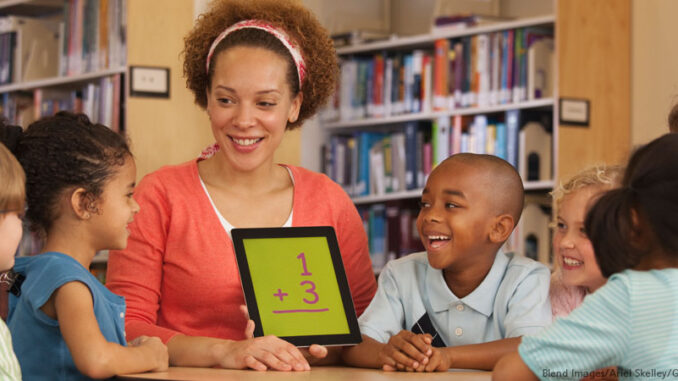
As students all over the country head back to school this month, educators are busy finding new ways to engage them in relevant and meaningful ways. For many, this means integrating technology that students already use every day outside of school–such as social media, video conferencing, and e-readers–into the classroom’s curriculum.
But transitioning these devices and this style of learning into today’s classroom is never an easy process. For every innovation and genuine connection there are unknown risks and challenges that can make the important learning process more complex.
Opportunities Like Never Before

The fact that the internet was once banned in the classroom but is now considered a major research tool is an indication that we are likely to see other technology adapted into teaching tools. With more than 900 million users, Facebook is the most popular social media site in the world. The challenge is how to effectively translate what is typically seen as just socializing into appropriate advances in learning. A seventh grade teacher in Portland, Oregon began using a Facebook-like forum for posting her assignments and leading discussions. As a result, more students began participating in extra credit, grades went up 5o percent, and there was considerably less absenteeism.
Supporters believe this is because Facebook is inherently collaborative. Another teacher began texting chronically tardy or absent students and saw an increase in attendance and participation. Advocates say this is a perfect example of how technology can encourage classroom engagement as a way to promote student understanding. All over the country, blogs have become a common way for teachers, students and parents to keep in touch.
Too Much Risk
Like any new technological tool, these new technology-based methods are only as effective as the person using it. Those skeptical of integrating technology into mainstream classrooms are concerned about exposure to inappropriate material, increased peer harassment and online bullying to name just a few possible dangers. Some critics are calling for stricter regulations or complete removal of all social networking from the classroom. Others believe that so much technology is taking its toll on students’ attention span and ability to read and think deeply. There are others still who fear that online courses will become inefficient substitutes for in-person teachers.
Plagiarism has become a major threat to educators, as access to for-purchase papers has increased. Cost is another major factor, as school districts contront the fact that not all students can afford these devices. In addition, there is the cost of WiFi access within the school and ongoing maintenance of the computers and computer systems, which can be a considerable drain on school districts already suffering increased budget cuts.
What’s Next?
Regardless of what medium they receive their curriculum, students will always need the support of teachers to identify student needs. Teachers always play a vital role in determining how best to guide young learners through their education. There will continue to be advances in the way we create and receive information. (Think of the printing press, calculator, VCRs and television, which came before today’s digital landscape.) How we choose to incorporate this technology is entirely up to us.
